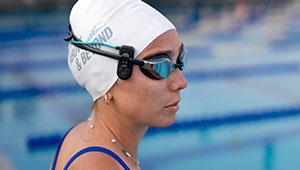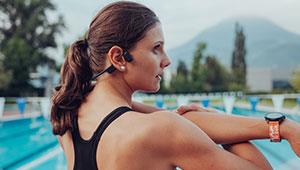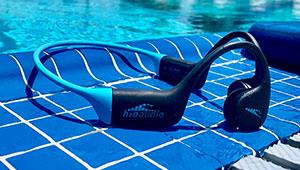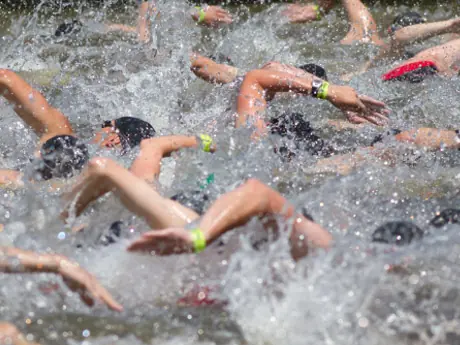
For many people, swimming can be the biggest barrier to entering a triathlon. While the thought of slipping into a murky body of water with a huge group of strangers may not give you the warm and fuzzies, swimming doesn't have to be so scary. Here, two top triathlon coaches weigh in on how to conquer the swim without the panic.
Go in Blind
Obviously, the best way to get used to open water swimming is to, well, swim in open water. But if you can't make it to a bay, lake or beach before race day, there are some tricks to try in the pool that can help minimize your fears.
For starters? Practice swimming with your eyes closed. "Many bodies of water we race in are dark with no semblance of clarity whatsoever," says Michelle Jezycki, a USAT Level I Triathlon Certified Coach and a Hyland's masters athlete in Washington, D.C. "This adds to your panic and can make you feel mentally defeated before you even get on the bike." Try swimming part of your sets with your eyes closed, focusing on getting more comfortable with your ability to swim straight.
More: 8 Tips for Open Water Swimming Newbies
Bunch Up
Hundreds of triathletes rushing into the water at once, hands and arms waving wildly, feet kicking like motors just millimeters from your face. No doubt, swimming is a full contact sport. So it's best to get prepared in the pool. "Swimmers who are taken by surprise can stall in the water and slow down," says Jezycki.
To simulate the chaos that often ensues at the start of a swim, practice swimming in bunches with your lane mates. "We do sets where several athletes start in the lane simultaneously. This helps you learn to maintain composure if and when you're hit."
Hang Back
And at the start of the race? You may be anxious to get out there, but it's best for you to begin towards the back of your wave. "Let the aggressive swimmers go first," says Jennifer Purdie, a triathlon coach in San Diego. "It lessens your chances of getting whacked in the head or smacked in the face."
Once you're out there, take it easy and work your way from one buoy to the next, rather than focusing on how long the course looks. "Stay relaxed with long strokes," says Jezycki. "There is a tendency to shorten the stroke, which only tires you out sooner and wastes energy."
- 1
- of
- 2
About the Author

Get ACTIVE on the Go


Meet Mobile
Swim smarter: heats, lane assignments and real-time results in the palm of your hand.
Available for iOS | Android







Discuss This Article